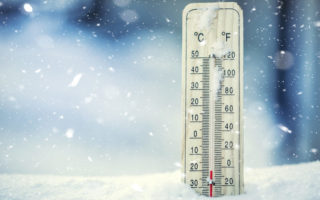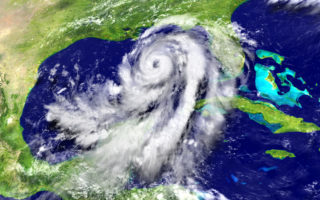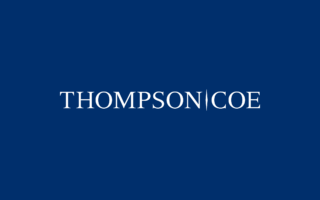Q&A From Insurance Coverage for COVID-19 Webinar
By Rhonda J. Thompson • Mar 27, 2020
Q and A summary from our recent webinar, Emerging Risks: Insurance Coverage for COVID-19, presented by Rhonda Thompson.
I’ve noted the construction industry is generally noted as an essential business in shelter in place communities — do you anticipate construction companies of every level facing liability issues for workplace safety in continuing to work as usual?
A: We do anticipate liability issues for workplace safety in construction context. Under the best of circumstances, safety on a construction site can be challenging. Numerous, common, construction activities require two or more workers to be standing side-by-side or at least within six feet of each other.
I know this is likely insurance company specific, but have you seen potential for coverage for certain things, for example, food contamination under different add on type of endorsements. If so, what examples have you seen?
A: In the context of food spoilage or contamination, we would expect to see some administrative order for required shut down due to the presence of a virus or contamination in the food product (ex. E. coli).
Could it also be argued that remaining partially open is an attempt to mitigate their losses per their duties as an insured although their normal operations are suspended?
A: In Texas, it is well settled that complete cessation of business constitutes “suspension”. In this instance, and depending upon the coverages, an opportunity to continue business – even if drastically reduced – might be better outcome than presenting a mitigated bi claim that is not covered.
How does the policy holder prove their property had contact with a virus?
A: Policyholder has burden to prove a claim covered by the insuring agreement. That burden should require more than someone who has been inside the building contracted the virus.
As to Virus Exclusion, what do you say to the counterargument that a business was closed due to government order, but no virus was found, and the shutdown was not due to virus.
A: With respect to the Virus Exclusion, the standard language requires the loss or damage to be caused by or resulting from a virus. If the loss or damage was not caused by or resulting from a virus, then the exclusion should not apply. Your question goes to the broader issue of the requirement for physical loss or damage, which is necessary to trigger standard commercial property coverage and business interruption coverage. We anticipate policyholder attorneys to argue that COVID-19 can cause physical damage to property so as to trigger coverage.
Will some of the executive orders and their verbiage (I haven’t seen them in their totality) possibly nullify some of these exclusions?
A: Executive orders should be inadmissible as part of an evaluation of whether a virus has caused direct physical loss. There is little question there will be an effort to use executive orders to try and persuade courts. An order from Harris County (Houston) issued yesterday (March 24th) specifically refers to virus as a contaminant causing property damage. Let me know if you’d like to have a copy of this order.
Will the court take into account that most places are closing or reducing their operations as a preventative measure? In other words the actions taken by the business are anticipatory and they may not be able to demonstrate that the virus did in fact come in contact with their business. Or will the court, for example, take judicial notice that the virus was everywhere?
A: Policyholder has burden to prove a claim covered by the insuring agreement. That burden should require evidence of the presence of a virus causing physical damage to a person or property. Evidence of taking a preventive measure should be insufficient to meet this burden.
OK, but this is a little different. Cleaning the insured property would not allow it to be accessed by the public thereafter, social distancing is still applicable ??
A: Disinfecting the property should eliminate a virus but a business may be required to close or reduce its operations pursuant to a government order, at least in the spirit of social distancing.
How would they prove contamination on the property? they aren’t testing surfaces for the virus…?
A: Policyholder has burden to prove a claim covered by the insuring agreement. That burden should require more than someone who has been inside the building has contracted the virus.
In DJ Action cases such as this where there is a material dispute in essential facts (i.e. 28 days), do you usually need to have a trial to establish facts before the courts decide on the DJ Action?
A: It depends. On a question about whether a virus was present for 28 days, yes. But, that issue may be immaterial if there is no evidence of physical loss.
Smoke damage is considered direct physical loss. How is ‘smoke’ that can be cleaned differ from a ‘contaminant’ that can be cleaned?
A: It’s not necessarily different. Smoke damage can be considered direct physical loss due to a Covered Cause of Loss (fire). And cleaning is a common repair. If a virus is a contaminant and causes direct physical damage due to a Covered Cause of Loss, and there is no applicable exclusion, adjust to clean may be appropriate. See the Chinese Drywall case we discussed where the replacement of the effected drywall was the remedy – not gutting the entire home.
Just because the COVID-19 “can” attach for a long period; does that obviate the probability/actuality that cleaning removes the “contamination”?
A: It does not. Cleaning the allegedly affected part of the property is reasonable. Industrial hygienist or similar should be a resource to add to your catastrophe response check list.
Dallas County issued a “Shelter in Place” Order. Tarrant County issued a “Stay at Home” order, what is the difference?
A: No meaningful difference, although each county’s order have specific perimeters. “Shelter in Place” is terminology used for an active shooter. I am speculating “Stay at Home” is a way to differentiate the purpose for sheltering.
What about the opposite? The customer base is gone? Commercial bakery no longer getting orders from restaurants?
A: Contingent Business Interruption can relate to losses for a Buyer. This coverage still requires direct physical loss.
I work for a self-insured municipality – a transit authority. If a transit worker is exposed while in course & scope, is that a covered workers comp loss? How do you prove the exposure occurred in course & scope?
A: It is challenging and must be more than a possibility of exposure. I sent your question to our comp guru Beth Bernstein (bbernstein@thompsoncoe.com) She’ll reach out to your directly with more guidance.
Will Rhonda be talking about coverage provided under the common Food Contamination & Communicable Disease Coverage Endorsement form?
A: We did not. Noted the topic and will be included in a follow up webinar in about 45 days. Keep an eye out for the invitation. In the meantime, let us know if we can discuss an issue that has come up under this coverage form.
In regard to many commercial policies, would the loss of use, which includes loss of market potentially be applicable as an exclusion?
A: Depends on the policy terms at issue. Likely, the same threshold issues are presented (direct physical damage caused by Covered Cause of Loss resulting in the Loss of Use)
Likely outcome – how many occurrences in the claims scenario where multiple people infected with virus on a cruise ship?
A: Number of occurrences is typically a fact driven inquiry. Need more factual information, but I could conceive of one occurrence or the number of infected people.
Does the CP Virus Exclusion override any Civil Authority coverage? The way I read it in our policy, it is a higher level exclusion than the grant of Civil authority BI.
A: The Virus Exclusion we reviewed is fairly expansive.
What HIPAA issues do we face when we request medical info from employees who appear to have covid-19 symptoms/flu symptoms to be sure we can protect the rest of our employees.
A: I forwarded your question to a couple of our Labor & Employment attorneys and they will follow up. Check out Thompson Coe’s HR Genius program.
Do you think the short POR will lead to multiple occurrences in a very long CAT?
A: It would not surprise me, personally.
On the US House slide she just mentioned, is this something that has been approved/passed or did it die like the NJ Legislation?
A: The legislation was not up for a vote, and while the support was bi-partisan, it did not appear to have majority support. Hopefully, the response from the industry was helpful in putting the kabosh on the legislation.
Can you guys revisit this topic in 60 days or so and provide us a legal update?
A: We are planning follow up webinar in 45 days. Keep an eye out for the invite. In the meantime, let us know if you have any immediate questions.
Would any of these exclusions or conditions be impacted by the fact that this virus originated in China? Is there anything that we should be looking at under the Coverage Territory under the policies?
A: Some commentary debates whether the virus originated in China. Coverage Territory is worth considering as part of overall coverage evaluation, along with designated premises, risk categories and underwriting on the risk.






